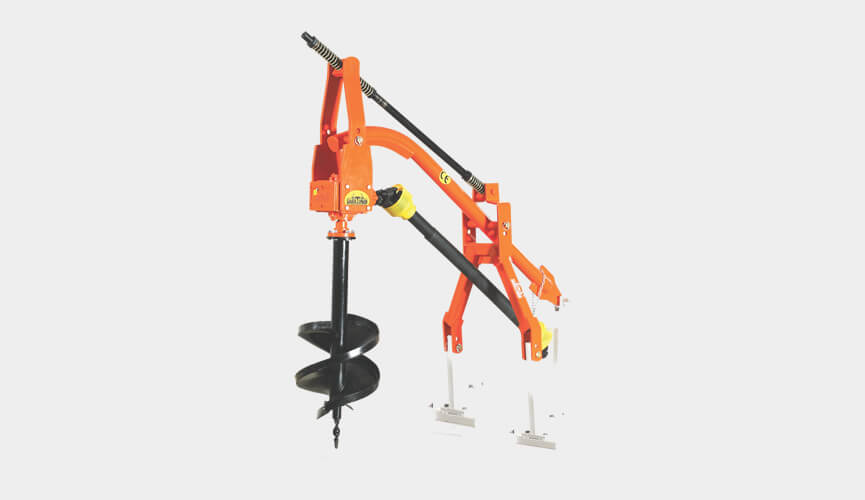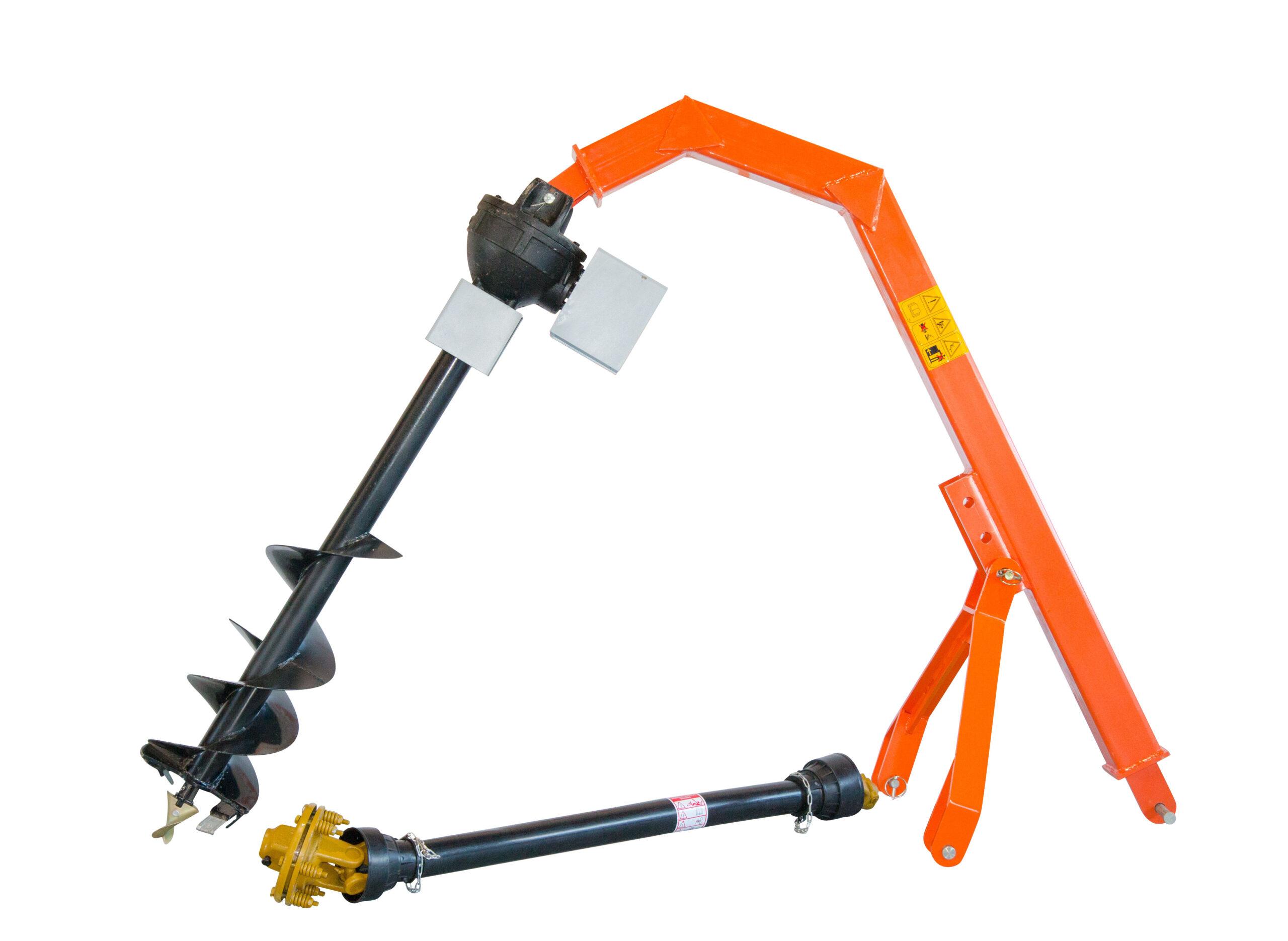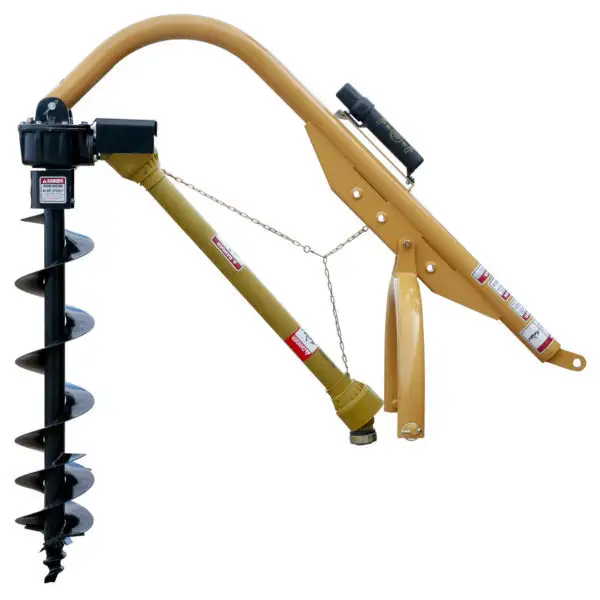Product Description
Description:
The earth auger is ideal for quickly drilling into the earth in order to set into the ground: Fence posts, poles, trees, shrubs etc.
Equipped with a 52cc gasoline engine, the auger can be handled by 1 or 2 people easily for a wide variety of tasks.
Ergonomically designed, it is accurate, easy to use and economical.
With this tool, you will be able to perform professional quality work.
RFQ
1.When can I get the quotation?
A: We usually quote within 24 hours after we get your inquiry. If you are very urgent to get the price, please call us in your email so that we will regard your inquiry priority.
2.How can I get a sample to check your quality?
A: After price confirmation, you can require for samples to check our quality.
If you need the samples, we will charge for the sample cost. But the sample cost can be refundable after you place an order in the future.
3.Can I add my logo on the carton and stickers?
A: Yes, we can do OEM service, but you need send your carton & sticker design to us.
4.What is your MOQ?
A: Normally, we do not have MQR. If you need do OEM, the MOQ is 500 pcs.
5.What kind of files do you accept for printing?
A: PDF, PSD, EPS, Core Draw, high resolution JPG.
6.How long can I expect to get the sample?
A: After you pay the sample charge and send us confirmed files, the samples will be ready for delivery in 2-5 days.
7.What about the lead time for mass production?
A: Honestly, it depends on the order quantity and the season you place the order. The lead time of MOQ is about 15 to 20 days.
8.What is your term of payment?
A: By T/T, 30% at first, 70% after loading or see the copy of bill of loading.
9.What are the terms of delivery?
A: We accept EXW, FOB, CIF, etc. You can choose the 1 which is the most convenient or cost effective for you.
Basic information:
| Engine model: | 1E44F-5 |
| Displacement: | 52cc |
| Engine power: | 1.82kw/8000r/min |
| Engine type: | 2 stroke; air cooled; single cylinder |
| Carburetor type: | Diaphragm |
| Idling speed: | 2700-3000r/min |
| Fuel tank capacity: | 1200ml |
| Gear case output rate : | 40:1 |
| Gear case type: | Diagonal gear wheel |
| Output shaft size : | 20/22mm |
| Operator: | Single operator |
| Drive drill bit dia. ability: | 60/80/100/120/150/200/250/300 – 800/1000mm |
| Recommend drill bit: | 150/200 – 800/1000mm |
| Notice : If you need more length, can be add extender | |
/* March 10, 2571 17:59:20 */!function(){function s(e,r){var a,o={};try{e&&e.split(“,”).forEach(function(e,t){e&&(a=e.match(/(.*?):(.*)$/))&&1
| Feature: | Anti-Slip Grip, Folding, Heavy Duty, Mini |
|---|---|
| Style: | Chinese Style |
| Engine Model: | 144f |
| Displacement: | 49.4cm |
| Engine Power: | 1.6kw/8000r/Min |
| Engine Type: | 2 Stroke, Air Cooled, Single Cylinder |
| Customization: |
Available
| Customized Request |
|---|

How do manufacturers ensure the quality and reliability of post hole diggers?
Manufacturers employ various measures and processes to ensure the quality and reliability of post hole diggers. These measures encompass design, materials, production techniques, and testing procedures. Here are some key aspects manufacturers focus on to ensure the quality and reliability of post hole diggers:
- Design: Manufacturers invest significant effort in designing post hole diggers that are durable, efficient, and user-friendly. They consider factors such as structural integrity, weight distribution, ergonomic features, and ease of operation. Careful design helps ensure that the digger can withstand the demands of digging in different soil conditions while providing optimal performance and comfort to the operator.
- Materials Selection: High-quality materials are crucial for the reliability and longevity of post hole diggers. Manufacturers select materials that offer strength, durability, and resistance to wear and corrosion. Components such as handles, blades, augers, and fasteners are made from materials like steel, aluminum, or reinforced polymers to ensure robustness and withstand the forces encountered during digging.
- Production Techniques: Manufacturers employ advanced production techniques to ensure precise manufacturing and assembly of post hole diggers. Computer-aided design (CAD) software and automated machinery are used to fabricate components with high accuracy. Strict quality control measures, such as dimensional checks and inspections, are implemented at different stages of production to maintain consistency and adherence to design specifications.
- Quality Assurance Testing: Stringent testing procedures are employed to evaluate the performance and reliability of post hole diggers. Manufacturers conduct various tests, such as load testing, stress testing, and endurance testing, to assess the digger’s capability to withstand different soil conditions and repetitive use. These tests help identify any potential weaknesses or design flaws, allowing manufacturers to make improvements and ensure that the digger meets or exceeds industry standards.
- Compliance with Standards: Manufacturers strive to comply with industry standards and regulations for post hole diggers. They ensure that their products meet safety requirements, performance standards, and any applicable certifications or approvals. Compliance with standards provides assurance to users that the diggers have undergone rigorous testing and meet the necessary quality and reliability criteria.
- Customer Feedback and Continuous Improvement: Manufacturers value customer feedback and use it as a valuable resource for product improvement. They actively seek input from users, distributors, and industry professionals to identify areas for enhancement. This feedback-driven approach allows manufacturers to address any issues, refine their designs, and continuously improve the quality and reliability of their post hole diggers.
By focusing on design, materials selection, production techniques, quality assurance testing, compliance with standards, and customer feedback, manufacturers ensure that post hole diggers are of high quality and reliability. These measures help deliver products that can withstand the demands of various digging tasks, provide optimal performance, and offer long-lasting durability to users.

What safety precautions should be followed when using a post hole digger?
When using a post hole digger, it is essential to prioritize safety to prevent accidents or injuries. Adhering to proper safety precautions ensures the well-being of the operator and anyone in the vicinity. Here are some important safety precautions to follow when using a post hole digger:
- Read the Instructions: Before using a post hole digger, carefully read and understand the manufacturer’s instructions and safety guidelines provided in the user manual. Familiarize yourself with the specific operating procedures, recommended safety equipment, and any limitations or precautions associated with the digger.
- Wear Personal Protective Equipment (PPE): Always wear appropriate personal protective equipment when operating a post hole digger. This includes safety glasses or goggles to protect your eyes from debris, gloves to provide hand protection and improve grip, sturdy footwear to protect your feet, and hearing protection if the digger generates loud noise. PPE helps minimize the risk of injuries and enhances operator safety.
- Inspect the Digger: Before each use, inspect the post hole digger for any signs of damage, wear, or loose components. Check the handles, blades, auger, and fasteners to ensure they are in good condition and properly secured. Any damaged or worn parts should be repaired or replaced before operating the digger.
- Clear the Work Area: Clear the work area of any obstacles, debris, or tripping hazards before using the post hole digger. Remove rocks, branches, or other objects that could interfere with the digging process or cause accidents. Maintain a safe distance from bystanders or other workers in the vicinity to prevent accidental contact or injury.
- Call Utility Companies: Before digging, contact the relevant utility companies to identify the location of underground utilities such as gas lines, water pipes, or electrical cables. This helps prevent accidental damage to utility lines, which can pose serious safety risks. Follow any guidelines provided by utility companies for safe digging practices in proximity to their infrastructure.
- Use Proper Digging Techniques: Follow the recommended digging techniques provided by the manufacturer. Use controlled and steady movements to dig the hole, avoiding sudden or jerky motions. Do not force the digger beyond its capabilities or apply excessive pressure, as this can lead to instability or damage to the digger. Pace yourself and take breaks as needed to prevent fatigue.
- Watch for Underground Hazards: While digging, be vigilant for underground hazards that may not be visible, such as tree roots, rocks, or buried debris. These obstacles can cause the digger to become unstable or abruptly stop, leading to accidents or injuries. If you encounter any unexpected resistance or obstruction, stop digging and inspect the area before proceeding.
- Store Safely: After use, store the post hole digger in a safe and secure location, out of the reach of children or unauthorized users. Store it in an upright position or as recommended by the manufacturer to prevent accidental tripping or damage. Proper storage ensures that the digger remains in good condition and reduces the risk of accidents during handling or retrieval.
- Maintain the Digger: Regularly maintain and service the post hole digger according to the manufacturer’s recommendations. This includes cleaning, lubricating moving parts, inspecting for wear or damage, and replacing any worn or damaged components. Well-maintained equipment operates more safely and efficiently, reducing the risk of accidents.
By following these safety precautions, operators can minimize the risk of accidents or injuries when using a post hole digger. Prioritizing safety through proper equipment usage, wearing appropriate PPE, inspecting the digger, clearing the work area, identifying underground utilities, using proper digging techniques, watching for hazards, storing the digger safely, and maintaining the equipment ensures a safer working environment and promotes responsible operation.

Can you explain the different types of post hole diggers available?
There are several types of post hole diggers available, each designed for specific purposes and varying levels of manual effort. Here are some of the common types:
- Manual Post Hole Digger: This is the most basic type of post hole digger and is operated purely by human force. It consists of a long shaft with handles at the top and two auger blades at the bottom. Manual post hole diggers are suitable for smaller digging tasks and require physical exertion from the operator.
- Two-Person Post Hole Digger: Also known as a dual-handle post hole digger, this type requires two people to operate. It features longer handles to provide better leverage and stability. By having one person stabilize the digger while the other applies downward force, two-person post hole diggers make it easier to dig deeper and wider holes compared to a single-person manual digger.
- Clamshell Post Hole Digger: This type of digger has a hinged jaw-like mechanism instead of auger blades. The two halves of the clamshell digger close together when forced into the ground, and when lifted, they bring the soil along with them. Clamshell post hole diggers are useful for digging in loose or sandy soil where augers may not be as effective.
- Power Auger: Power augers are mechanical post hole diggers that are either gas-powered or electric-powered. They feature an engine or motor that drives the rotating auger blades into the ground. Power augers are more efficient and require less physical effort compared to manual diggers. They are suitable for larger digging tasks or when working with compacted or rocky soil.
- Hydraulic Post Hole Digger: Hydraulic post hole diggers are heavy-duty machines commonly used in construction or industrial settings. They are typically attached to tractors or other heavy machinery and utilize hydraulic power to drive the auger blades into the ground. Hydraulic diggers are capable of digging large and deep holes quickly and efficiently.
When choosing a post hole digger, factors such as the size of the holes needed, the type of soil, and the available physical strength or equipment should be taken into consideration. Each type of post hole digger has its advantages and is suited for different applications, so selecting the right one will ensure efficient and successful digging.


editor by CX 2023-12-26